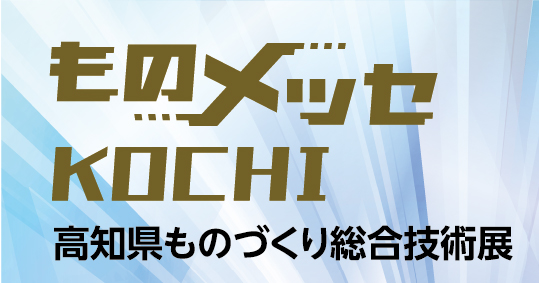Creation is life!
Arcreate Corporation

I-210 Esukoto Isamu, 20-15 Otanikoen-cho
Kochi City, Kochi, Japan 780-8085
Tel 088-840-6698
Fax 088-840-5444
Founded: January 2003
Homepage: http://www.arcreate.co.jp/
Main Business
1) Construction, civil engineering work
2) Provide services including estimates, fabrication, management, inspection, technical instruction and sale of know-how for construction and civil engineering work
3) Provide services including design, estimates, management, inspection, technical instruction and sale of know-how for building structures
4) Manufacture and sale of materials for construction and civil engineering work
5) Design, manufacture, and sale of mechanical equipment for construction and civil engineering work
6) Development, drafting, planning and manufacture of machine processing tools, construction tools, and artwork utilizing laser beam generators
(Photo: One example of the construction processes developed by Arcreate. There is no extrusion of diaphragms, leaving the structure simple and beautiful.)
New development born from the blind spots in steel frame structure engineering

President: Masayoshi Uchida, Ph.D. in Engineering
Masayoshi Uchida acquired a doctorate in engineering while he was working for a large construction company after his graduation from the Osaka University and its graduate school majoring in welding engineering. The turning point in his career was the Great Hanshin-Awaji Earthquake in 1995, when he was stunned by the destruction of the welded parts of steel frame structures. He recognized the blind spot of engineers concerning welding connections, so he began studying ways to improve conventional welding techniques. Coincidentally, the Center for Regional Collaboration Studies at Kochi University was established the same year. The Center pioneered the creation of a Disaster Science Course, and he was invited to be an associate professor. He decided to move to Kochi at the age of 55, and later became a professor at Kochi University.
The WAWO (Welding for Anti-Wave-Obstruction) Construction Process was developed as part of a university-industry-government collaboration, and has swept away conventional concepts concerning steel frame structures.
The Arcreate Corporation was established to develop low-cost steel frame structures sturdy enough to survive natural disasters and to further improve construction processes.
(Photo: President Masayoshi Uchida explains the WAWO Construction Process with the use of a model.)
Welding is the basis of all modern engineering

The history of metal welding goes all the way back to about 3000 B.C.
The welding technique helped to drastically change the world during the Industrial Revolution in the 19th century.
Uchida believes mankind could have not progressed as much as it has without welding, saying, "Welding works to connect materials, assemble and build. It created many industries. If the technique of welding did not exist, the modern construction, shipbuilding, aviation, automobile, railroad, bridge building, machinery and many other industries would not exist today."
(Photo: Welding work of pile and column using the KK-ONE Construction Process)
WAWO Construction Process

The WAWO Construction Process is an advanced welding technique used to obtain stronger, smoother, and advanced welded connections. It also works to improve the weak points of the conventional process of making steel frame structures. WAWO stands for Welding for Anti-Wave Obstruction.
<Conventional Process>
The following work and parts are necessary to assemble the steel columns and girders that are the main building members.
1) Scallops--holes made to place the backing plates on both ends of girders connected to columns
2) Backing plates--metal plates placed through the scallops connected to girders
3) End tabs--metal plates to support both ends of backing plates
4) Diaphragms--ledges from columns at the connecting part with girders
<WAWO Construction Process>
The WAWO Construction Process has eliminated the above work and parts. It also has enabled the earthquake-resistance strength of the welded segments of columns and girders to increase by 2.5 times, resulting in lower costs and shorter building times. Furthermore, because the welded segments have no diaphragms, the structure is simpler and can employ better designs.
(Diagram: Illustrations of the conventional construction process and the WAWO Construction Process)
(Photo: Models comparing the conventional construction process and the WAWO Construction Process)
KK-ONE Construction Process
(Photo: Construction site using the KK-ONE Construction Process)
Buildings and structures require the foundation to be in contact with the ground. The KK-ONE Construction Process has changed the conventional way to build foundations.
<Conventional Process>
Excavate an area of ground larger than the dimensions of the building, allowing working space on the ground, and build a sturdy foundation in the ground with concrete. A large amount of soil must be transferred elsewhere as digging continues. Neighboring properties must also be protected so as not to be damaged by the construction. If the ground is soft or not strong enough to support the building, the soil must be improved and it may be necessary to pound many pilings deep into the ground, depending on the size of the building.
<KK-ONE Construction Process>
A conventional concrete foundation is not necessary and the number or amount of materials such as steel rods for excavation, foundation frames, and concrete can be significantly reduced. Steel pipe piles are directly pounded into the ground at appropriate distances between them. They are connected by welding at cores to the columns of the building. The strength of steel piles in the ground are maintained by frictional force.
The KK-ONE Construction Process has the following effects:
-Large scale groundwork is not necessary, unlike the conventional process for foundation construction. Excavation over a large area is not required, making the earth retaining work unnecessary due to small damaging influence to connecting properties. Reduces large noise and vibratory sounds caused by large construction machinery. No concrete foundation is necessary. Almost no soil waste must be carried away.
-Easy on-site adjustment of height, level and inclination
-Easy welding process to connect piles to columns
-Possible to work on small site and soft ground
-Shortened construction period


(Diagram: Illustrations of the conventional construction process and the KK-ONE Construction Process)
The KK-ONE Construction Process makes artificial ground possible for urbanization in the 21st Century!


(Diagram: Illustrations of artificial ground built by the KK-ONE Construction Process)
Large-scale artificial ground by the KK-ONE Construction Process! A grand project for the near future.
If realized, it will be a dream come true of a practical countermeasure against tsunami in future urban development. For example, the ground surface will be used as roads for vehicles and other traffic systems, while gigantic cities, where people will live, will be built on artificial ground. This could protect the lives of people residing there when natural disasters such as tsunami occur.
Looking back on the history of construction, the three great inventions of steel, glass, and concrete caused a global change. These three innovations become the main materials used in modern construction in the 20th century. One of the world's greatest architects, Le Corbusier (1887-1965), proposed new styles of architecture, such as rooftop gardens and pillars which made the ground floor an open space with beautiful columns. About 100 years later, in the 21st century, such pillars, which used to support only buildings, may be able to hold up a massive city with the KK-ONE Cconstruction Process.
(Photo: Villa Savoye, a masterpiece by Le Corbusier, built in 1931 in a suburb of Paris. Photo by Shuichi Nishimori.)
Lifesaving cases with architecture: "Safe houses to live in and strong buildings to survive in times of disaster"

A six-story, 2,600 sq.-meter rental residence for senior citizen built using the WAWO Construction Process was completed at the end of February 2011 in Ishinomaki City, Miyagi Prefecture. Soon after its completion, the Great East Japan Earthquake hit the area, but the building was not damaged. The neighboring area was swept by a two-meter-high tsunami, but because the building remained intact, it was used as a shelter for 300 people from the area and their lives were saved.
"Safe houses and strong buildings to survive in times of disaster," Uchida always keep that idea in mind. It gave him a great sense of relief that despite the catastrophe, a building built by the WAWO Construction Process had survived the quake and tsunami.
(Photos: Rental residences for senior citizens built in Ishinomaki City, Miyagi Prefecture, using the WAWO Construction Process and photos showing their condition after the Great East Japan Earthquake.)
Earthquake Technology Expo

The 18th Earthquake Technology Expo was held at Pacifico Yokohama on Feb. 6-7, 2014. About 250 companies participated in the show, displaying their products and technologies to counter disasters such as earthquakes, floods, landslides, lightning, tsunami, sudden winds, tornados and volcanic eruptions. The company participated in the exhibition, and used displays of models and pictures of the WAWO and KK-ONE Construction Processes for Uchida to explain to visitors.
(Photo: At the 18th Earthquake Technology Expo)
"Welding Design" which saves people from natural disasters

A three-story tsunami shelter tower being built according to the WAWO Construction Process is nearing completion in Kure, Nakatosa-cho, Kochi Prefecture.
Earthquake disaster countermeasures have become especially important in recent years. Both the WAWO and KK-ONE Construction Process are being promoted for building disaster-prevention facilities because of their enhanced safety during earthquakes.
(Left Photo:Foundation of a tsunami evacuation tower to be built using the KK-ONE Construction Process)
(Photos: A tsunami evacuation tower being built using the WAWO Construction Process)
Structural perfection is beautiful
The company's name, Arcreate, is coined from the words "Arc" and "Create."
"Arc" means the arc for welding and includes the meaning of architecture. "Create" is to invent or design something.
"Creation is life" is one of Uchida's catch phrases.
Uchida began living in Kochi at the age of 55. He adores the land of Kochi as "independent, strong, and beautiful land surrounded by mountains and the sea." He spends his days studying and developing welding designs. "Structural perfection is beautiful," he says enthusiastically, showing evidence of the effectiveness of the WAWO Construction Process.


(Left Photo: Main frames of rental residences for senior citizens using the WAWO Construction Process, in Ishinomaki City, Miyagi Prefecture)
(Right Photo: Parking platform built using the KK-One Construction Process)
































